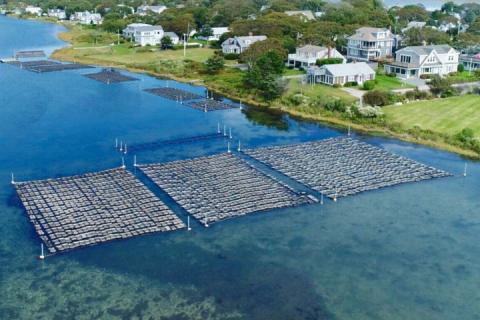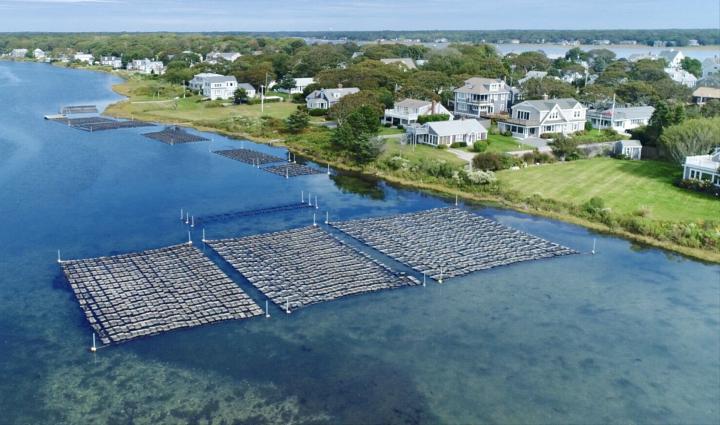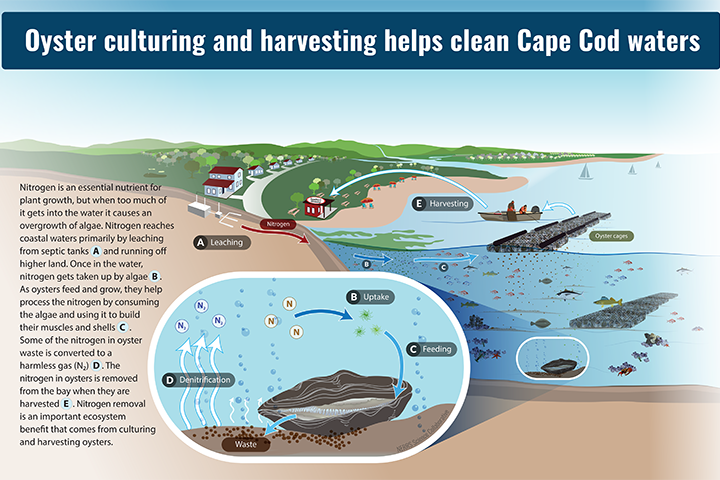
Water quality and the overall health of many estuarine systems has been deteriorating due to nitrogen pollution. Excess nitrogen in coastal waters, which can come from septic systems, fertilizers, and atmospheric deposition, can lead to algal blooms, fish kills, and shellfish and beach closures. In Massachusetts, towns along Cape Cod are under pressure to improve coastal water quality, but many approaches are very costly, such as developing centralized sewer treatment infrastructure for homes that currently have septic systems. Instead, many towns are exploring the use of various shellfish aquaculture systems to improve water quality.
This project addressed a critical information gap identified by water quality managers and regulators, specifically: how much nitrogen is removed from coastal waters by common oyster aquaculture methods, and what culturing practices should be adopted to maximize benefits for water quality? To address this question, researchers worked closely with the Town of Falmouth to establish an experiment that mimicked commercial aquaculture practices and allowed for a robust comparison of nitrogen removal rates from three oyster growing systems. They found that all three oyster culturing methods stimulated natural microbial processes that remove nitrogen, which can measurably improve water quality. Project findings have been shared through innovative products to help new growers adopt best practices and allow towns and regulators to decide when shellfish aquaculture is a viable strategy for improving coastal water quality.
The video clip below explains the role oysters play in improving water quality through denitrification. Animation credit: Linda Pham, Boston University.







